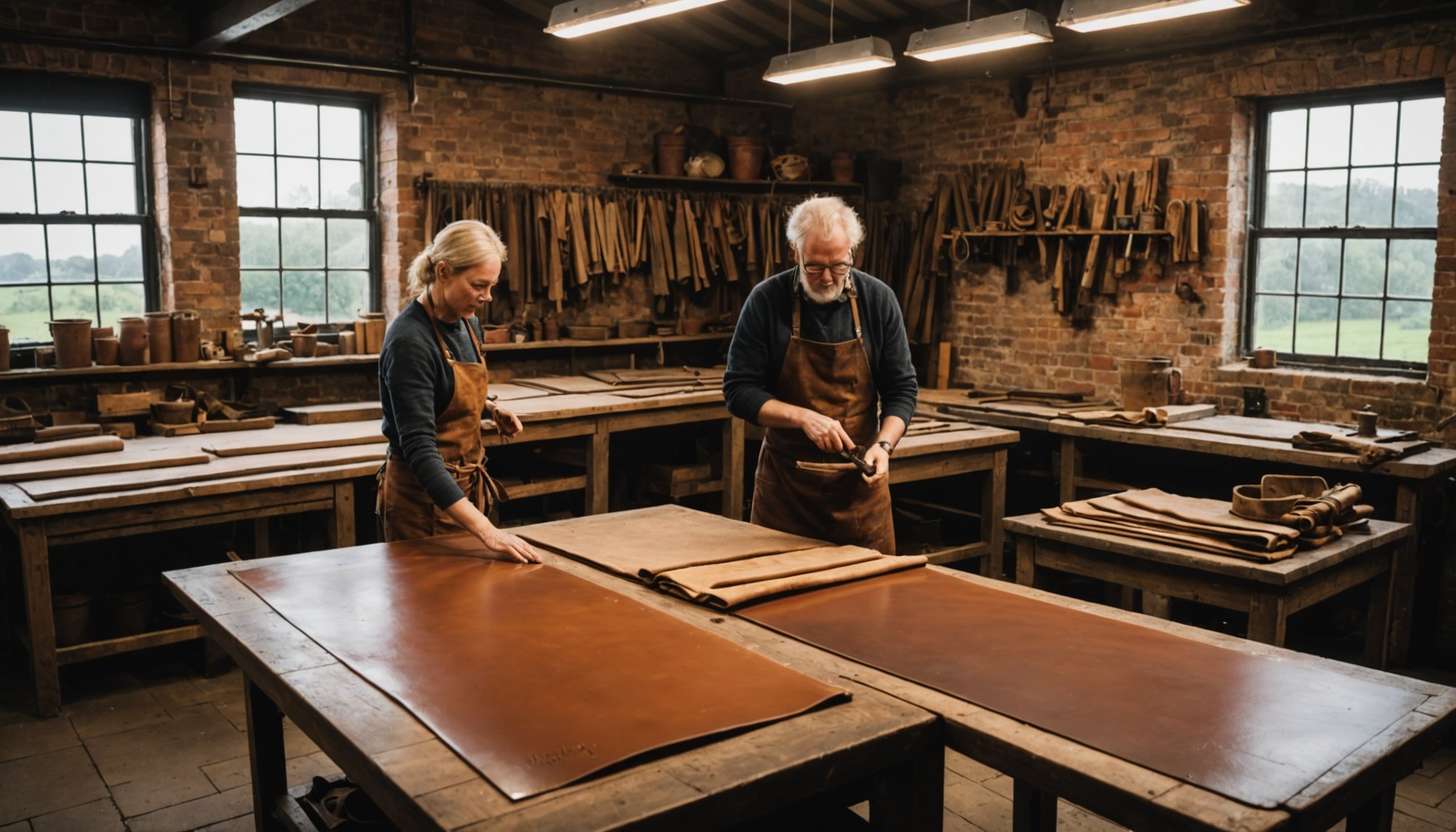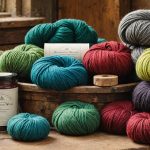Uncovering the Craft of Authentic British Leather Tanning: Hands-on Workshops for Engaging Visitor Experiences
The Rich History of Leather Tanning in the UK
Leather tanning, an art that dates back to prehistoric times, has been an integral part of British culture and industry for centuries. The process of transforming raw animal hides into durable, versatile leather has evolved significantly, yet the traditional methods remain a cornerstone of the craft. In the United Kingdom, particularly in Walsall, this heritage is celebrated and preserved through various initiatives, including hands-on workshops that offer visitors a unique and engaging experience.
Walsall: The Heart of British Leather Industry
Walsall, a town in the West Midlands, has been synonymous with the leather industry since the 18th century. The town’s strategic location and access to raw materials made it an ideal hub for leather production. Today, the Walsall Leather Museum stands as a testament to this rich history, offering a fascinating insight into the story of Walsall’s famous leatherworking trade[3].
Also read : Exploring somerset: a memorable adventure through britain’s exquisite cheese tasting culture
The Art of Traditional Leather Tanning
Traditional leather tanning, particularly vegetable tanning, is an art form that requires patience, skill, and a deep understanding of the natural world. This method, which uses tannins extracted from plants like tree bark and acorns, is not only environmentally friendly but also produces leather that is exceptionally durable and develops a beautiful patina over time.
The Tanning Process
The tanning process involves several key steps:
In parallel : Immerse yourself in traditional british wool dyeing: an insider’s guide to engaging workshops for travelers
- Soaking and Liming: The raw hides are soaked in water and then treated with lime to remove the natural oils and hair.
- Deliming and Bating: The hides are then delimed to remove excess lime and bated to make them soft and supple.
- Pickling: The hides are pickled in a solution of acid and salt to prepare them for tanning.
- Tanning: The hides are immersed in a tannin solution, where they absorb the tannins over several weeks or months.
- Neutralization and Dyeing: After tanning, the leather is neutralized to stop the tanning process and then dyed to achieve the desired color.
- Fatliquoring and Finishing: The leather is treated with fatliquors to enhance its softness and then finished with various treatments to give it the desired texture and appearance[4].
Hands-on Workshops at Walsall Leather Museum
The Walsall Leather Museum offers a range of hands-on workshops that allow visitors to experience the art of leather tanning firsthand. These workshops are designed to engage visitors of all ages and skill levels, providing a unique and educational experience.
Workshops for All Ages
- Children’s Workshops: The museum offers various workshops for children, including leather crafting sessions where they can make their own leather key rings, bookmarks, or other small leather goods. These workshops are not only fun but also educational, teaching children about the history and craft of leather tanning[2].
- Adult Workshops: For adults, the museum provides more advanced workshops where participants can learn traditional leather tanning techniques, including cutting, stitching, and finishing. These workshops are led by experienced local artisans who share their skills and knowledge with the participants.
What to Expect in a Workshop
Here’s a detailed look at what you might expect in one of these workshops:
- Introduction to Leather Tanning: The workshop begins with an introduction to the history and basics of leather tanning. Participants learn about the different types of leather, the tanning process, and the tools required.
- Hands-on Activities: Participants then engage in hands-on activities such as cutting leather, stitching, and applying finishes. They work on small projects like making a leather wallet or a key ring.
- Guidance from Local Artisans: Throughout the workshop, participants receive guidance from local artisans who have spent years mastering the craft. This ensures that they learn the traditional techniques correctly and can ask questions and seek advice.
- Take-Home Projects: At the end of the workshop, participants take home their finished projects, along with a newfound appreciation for the art of leather tanning.
The Cultural and Historical Significance
The workshops at Walsall Leather Museum are not just about learning a new skill; they are also about connecting with the cultural and historical heritage of the region.
Preserving Traditional Skills
By participating in these workshops, visitors help preserve traditional skills that are at risk of being lost. The museum’s efforts to keep these skills alive are part of a broader cultural heritage initiative that aims to educate and engage the community in the local history of leather tanning.
Community Engagement
The workshops also serve as a platform for community engagement. Local artists and artisans come together to share their knowledge and skills, creating a sense of community and camaraderie among the participants. As one visitor noted on Tripadvisor, “Paul and Rose went out of their way to give us a very interesting and informative tour. Their personal skills and experience helped considerably in explaining the various stages and processes”[3].
Practical Insights and Tips
For those interested in exploring the art of leather tanning further, here are some practical insights and tips:
Tools and Materials
- Sharp Cutting Knife: A sharp cutting knife is essential for cutting leather accurately.
- Cutting Board and Metal Ruler: These tools help in measuring and cutting the leather precisely.
- Stitch Marker and Stitching Awl: These are necessary for marking and piercing holes for stitching.
- Leather Needles and Thread: Leather needles are thicker and blunter than other needles, and the thread should be strong and suitable for leather[4].
Caring for Your Leather Goods
To ensure your leather goods last long, here are some care tips:
- Use a Soft Brush: Clean your leather goods with a soft brush to remove daily dirt and grime.
- Moist Cloth: If needed, use a moist cloth, but avoid making it too wet as this can stain the leather.
- Avoid Harsh Chemicals: Never use harsh chemicals or abrasive cleaners on leather.
- Condition Regularly: Use a leather conditioner to keep the leather soft and supple[1].
A Comparative Look at Vegetable and Chrome Tanning
Here is a comparative table outlining the key differences between vegetable and chrome tanning:
| Characteristics | Vegetable Tanning | Chrome Tanning |
|---|---|---|
| Tanning Agent | Plant-based tannins (tree bark, acorns) | Chrome salts |
| Environmental Impact | More environmentally friendly | Uses toxic chemicals |
| Durability | Highly durable, develops patina over time | Less durable, more prone to cracking |
| Softness | Soft and supple | Can be stiff and less flexible |
| Color Stability | Natural colors, can darken over time | Brighter colors, less color stability |
| Production Time | Longer production time (weeks or months) | Faster production time (days or weeks) |
| Cost | Generally more expensive | Less expensive |
Visiting the Walsall Leather Museum and participating in their hands-on workshops offers a unique and enriching experience that delves into the heart of British leather tanning. Whether you are a history enthusiast, a craft lover, or simply someone looking to learn a new skill, these workshops provide a comprehensive and engaging way to connect with the traditional arts and crafts of the region.
As you explore the world of leather tanning, you are not just learning a new craft; you are also contributing to the preservation of a cultural heritage that is deeply rooted in the local history of Walsall. So, take a trip to Walsall, visit the museum, and immerse yourself in the art and tradition of authentic British leather tanning. It is an experience that will leave you with a newfound appreciation for the craftsmanship and a set of skills that you can cherish for a lifetime.











